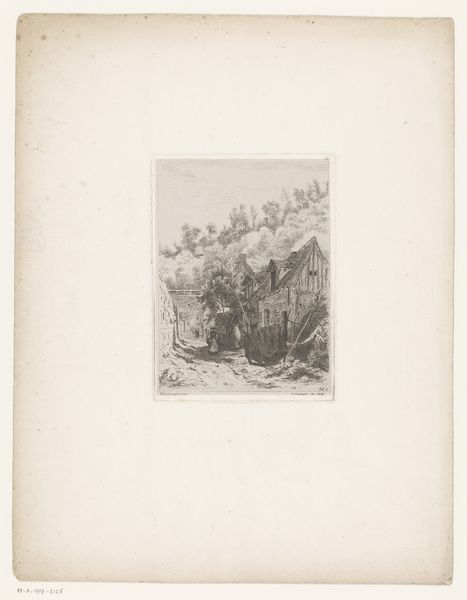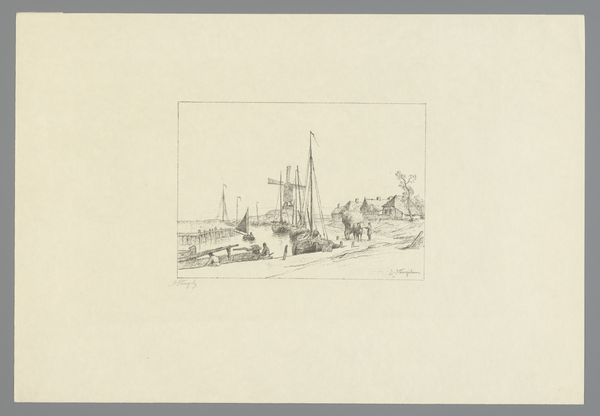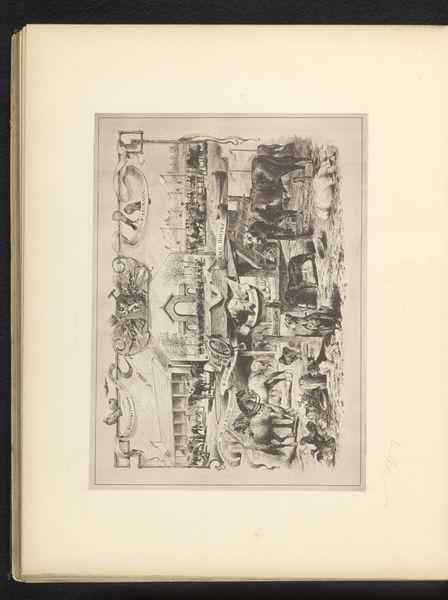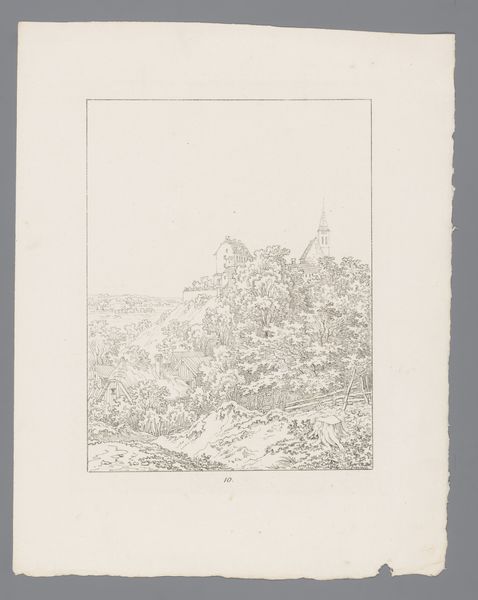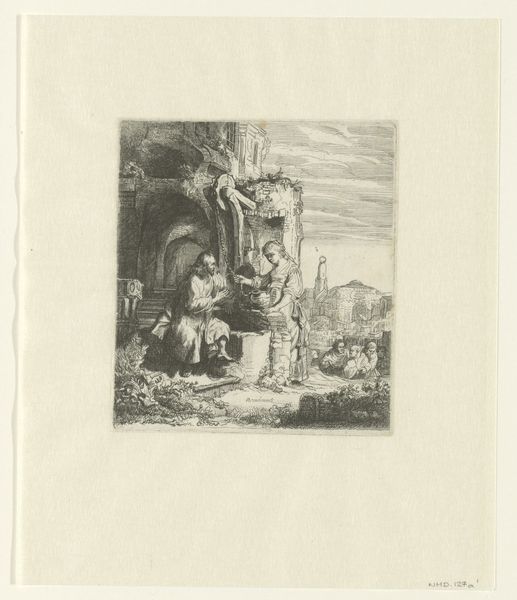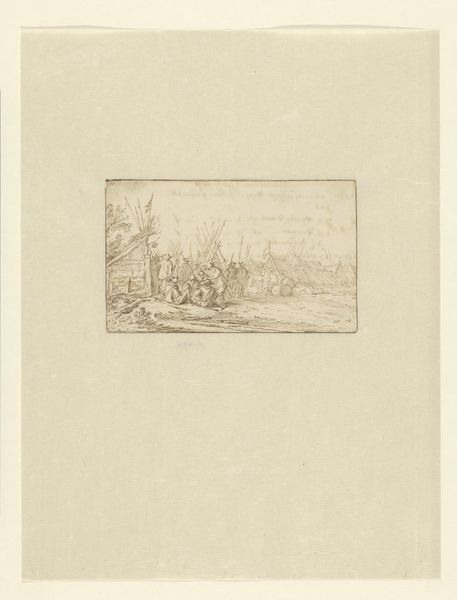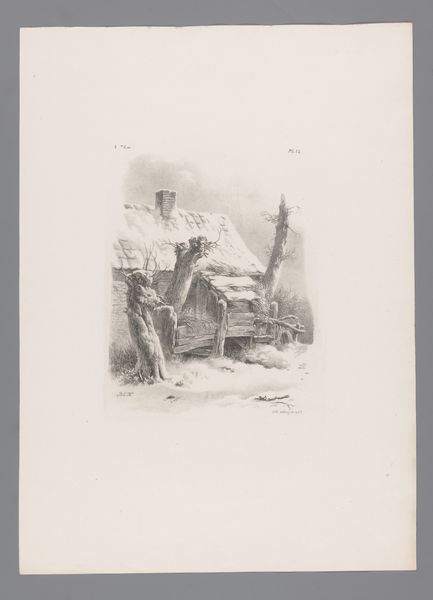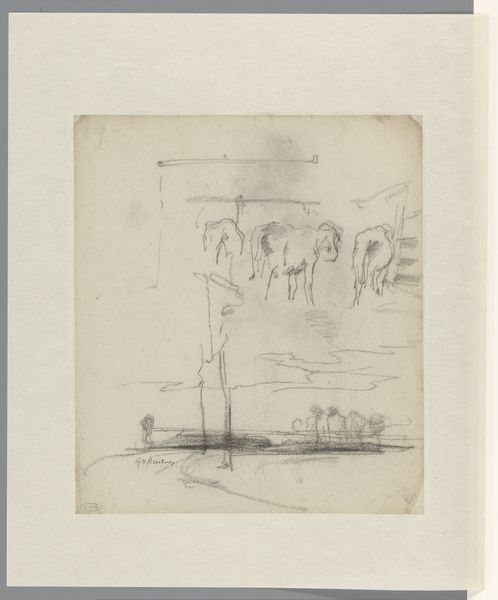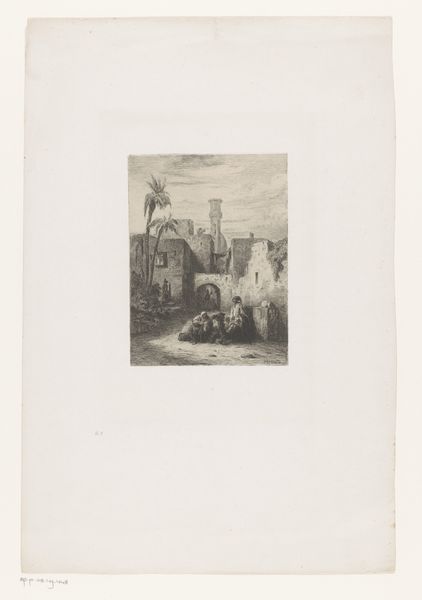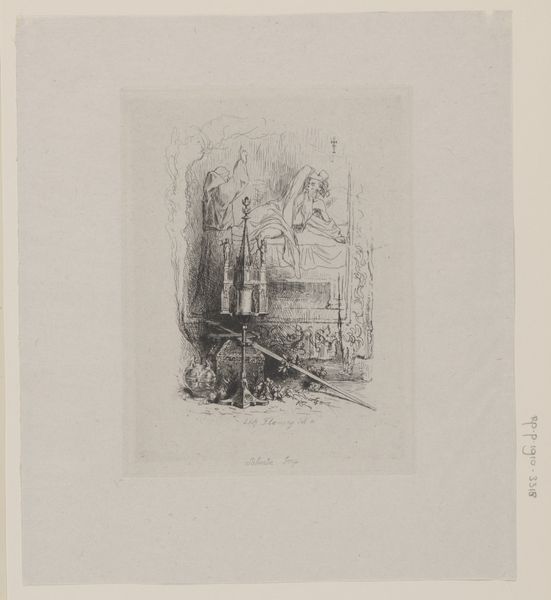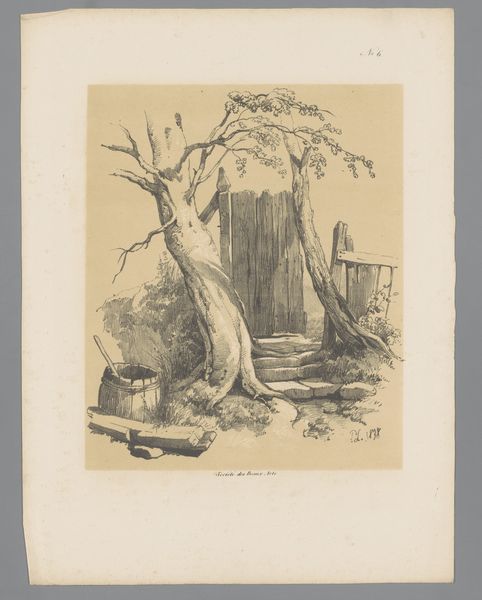
drawing, print, etching, paper
#
drawing
# print
#
etching
#
landscape
#
paper
#
watercolour illustration
#
genre-painting
#
realism
Dimensions: height 354 mm, width 271 mm
Copyright: Rijks Museum: Open Domain
Curator: Looking at this etching from between 1832 and 1835 by Eugène Lepoittevin titled "Two Mules in a Fishing Port," one immediately feels a sense of stark, unromantic labor. Editor: Yes, it's bleak, isn't it? The grey scale flattens the scene. I am drawn to the unadorned depiction of labor, those weary mules perhaps symbols of exploitation embedded within early industrial fishing economies. Curator: Interesting. I am immediately drawn to the sharp angles formed by the architecture. Note how the vertical lines of the ramshackle building at the left contrast with the curves of the mules’ bodies, creating a dynamic tension within the composition. It draws your eye across the image. Editor: But what about the composition framing these mules in this light? Surely this isn't just about formal concerns. Consider the implications of showing labor like this in 19th-century France. The etching implicates emerging class tensions. Curator: I understand the thematic significance of showing these animals in labor, but observe the detail. See how Lepoittevin uses etching techniques to produce incredibly fine lines and textures, creating depth and atmosphere that evoke a sense of realism that invites you to reflect on the image. Editor: Absolutely, and that realism implicates the viewer. These are not heroic animals; they are workers, cogs in a machine controlled by socioeconomic factors of their environment, and, here, art. By choosing this subject and depicting it with such unvarnished honesty, Lepoittevin seems to comment on how beasts of burden enable and define structures. Curator: True, this commentary does exist. Still, you can appreciate the meticulous detail, can’t you? Note how Lepoittevin contrasts the smooth coats of the mules against the rough texture of the building and the ground. Editor: That's very true and important, showing this relationship by visual comparison as well. Perhaps Lepoittevin wanted the viewer to face what capitalism leaves behind. The fact that it’s called a fishing "port" suggests a location facilitating global trade as well. Curator: Lepoittevin’s craft does create a thought-provoking scene, no doubt about that. Editor: Well said. Together, form and sociohistorical context invite dialogue—exactly the sort of intersectional readings needed to interpret art’s effect on and reflection of the world.
Comments
No comments
Be the first to comment and join the conversation on the ultimate creative platform.
